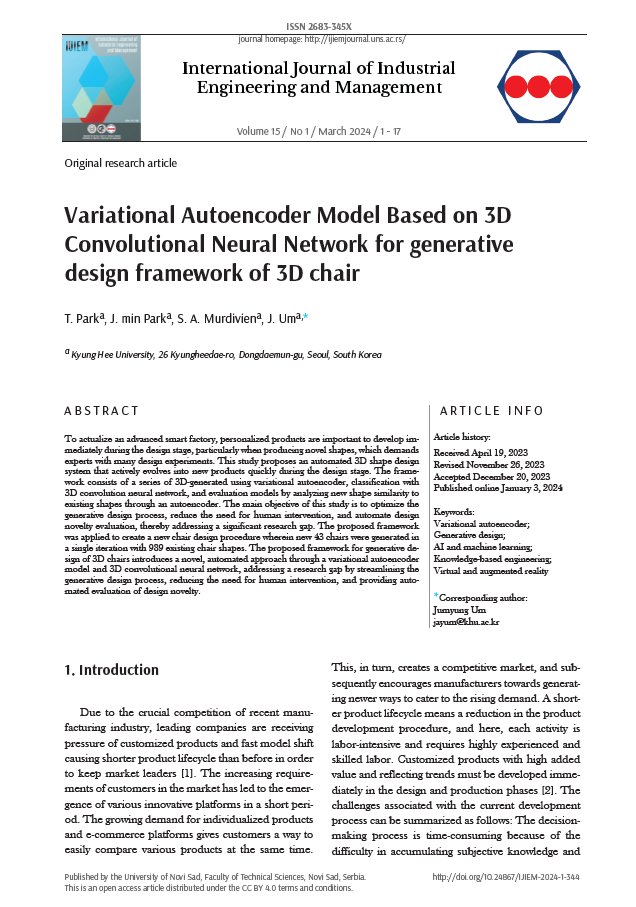Variational Autoencoder Model Based on 3D Convolutional Neural Network for generative design framework of 3D chair

Published 2024-03-11
abstract views: 618 // REFERENCES (PDF): 0
Keywords
- variational autoencoder,
- generative design,
- AI and machine learning,
- knowledge-based engineering,
- virtual and augmented reality
How to Cite
Copyright (c) 2024 International Journal of Industrial Engineering and Management

This work is licensed under a Creative Commons Attribution 4.0 International License.
Abstract
To actualize an advanced smart factory, personalized products are important to develop immediately during the design stage, particularly when producing novel shapes, which demands experts with many design experiments. This study proposes an automated 3D shape design system that actively evolves into new products quickly during the design stage. The framework consists of a series of 3D-generated using variational autoencoder, classification with 3D convolution neural network, and evaluation models by analyzing new shape similarity to existing shapes through an autoencoder. The main objective of this study is to optimize the generative design process, reduce the need for human intervention, and automate design novelty evaluation, thereby addressing a significant research gap. The proposed framework was applied to create a new chair design procedure wherein new 43 chairs were generated in a single iteration with 989 existing chair shapes. The proposed framework for generative design of 3D chairs introduces a novel, automated approach through a variational autoencoder model and 3D convolutional neural network, addressing a research gap by streamlining the generative design process, reducing the need for human intervention, and providing automated evaluation of design novelty.
Article history: Received (April 19,2023); Revised (November 26,2023); Accepted (December 20,2023); Published online (January 3,2024)

